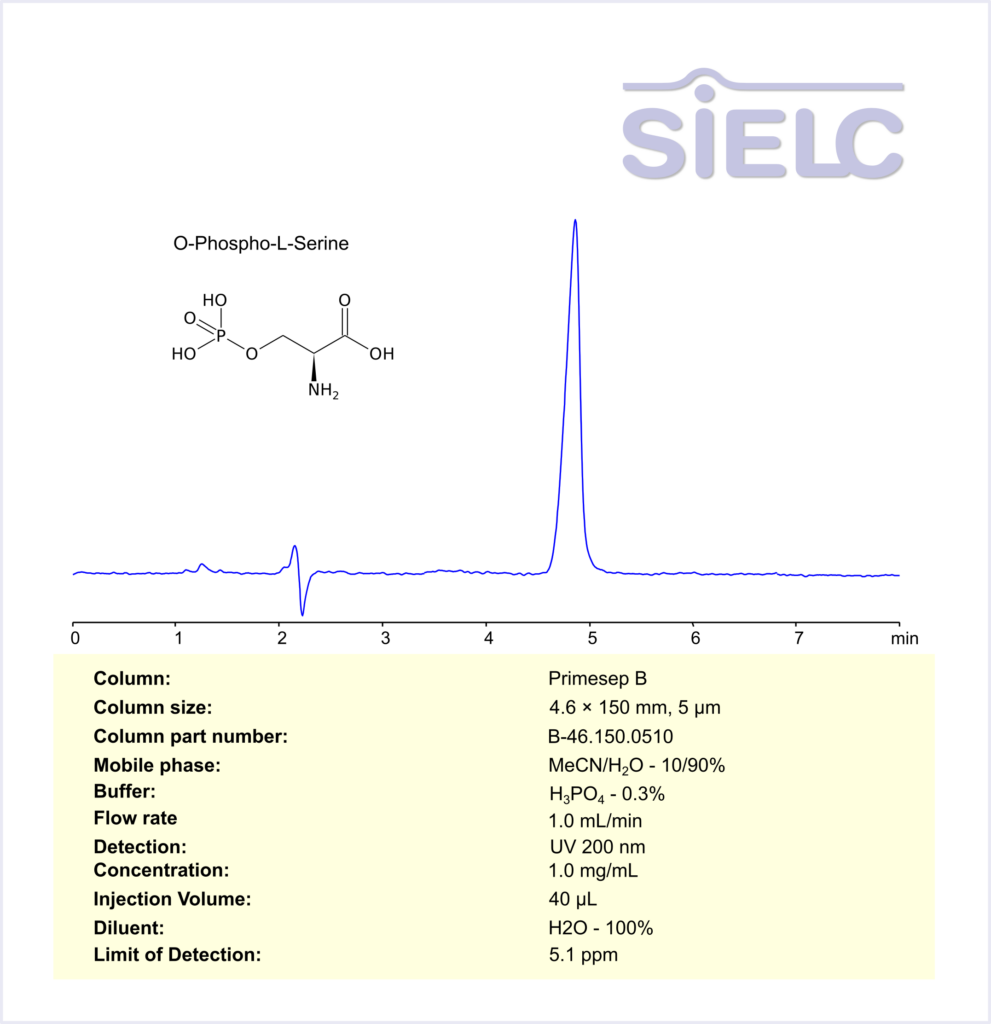High Performance Liquid Chromatography (HPLC) Method for Analysis of Phosphoserine on Primesep B by SIELC Technologies
Separation type: Liquid Chromatography Mixed-mode SIELC Technologies

High Performance Liquid Chromatography (HPLC) Method for Analysis of Phosphoserine
Phosphoserine is a phosphorylated derivative of the amino acid serine, formed when a phosphate group is attached to its hydroxyl group. It plays a key role in cellular signaling and metabolic processes, serving as a precursor for the biosynthesis of important biomolecules like phospholipids, proteins, and nucleotides. Phosphoserine is also involved in protein phosphorylation, a critical post-translational modification regulating enzyme activity and signal transduction pathways.
Phosphoserine can be retained, separated and analyzed using a Primesep B mixed-mode stationary phase column. The analysis employs an isocratic method with a simple mobile phase comprising water, acetonitrile (MeCN), and phosphoric acid as a buffer. This method allows for detection using UV 200 nm.
| Column | Primesep B, 4.6 x 150 mm, 5 µm, 100 A, dual ended |
| Mobile Phase | MeCN – 10% |
| Buffer | H3PO4 – 0.3% |
| Flow Rate | 1.0 ml/min |
| Detection | UV 200 |
| Sample | 1.0 mg/mL |
| Diluent | H2O- 100% |
| LOD* | 5.1 ppm |
| Class of Compounds | Amino acid |
| Analyzing Compounds | Phosphoserine |
Application Column
Primesep B
Column Diameter: 4.6 mm
Column Length: 150 mm
Particle Size: 5 µm
Pore Size: 100 A
Column options: dual ended





